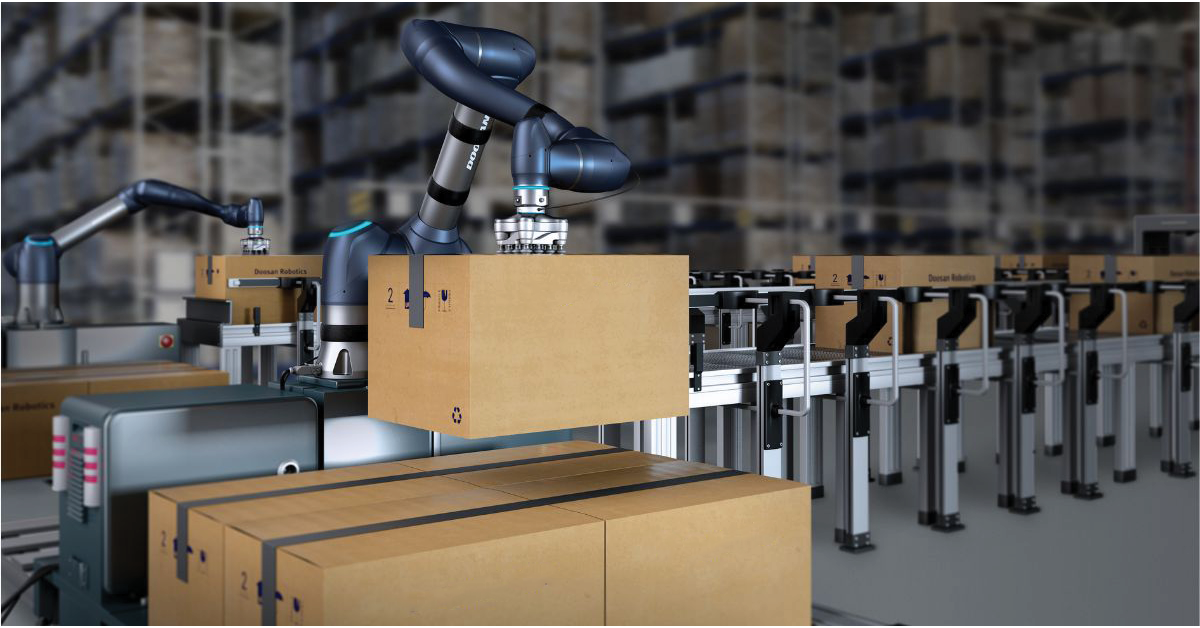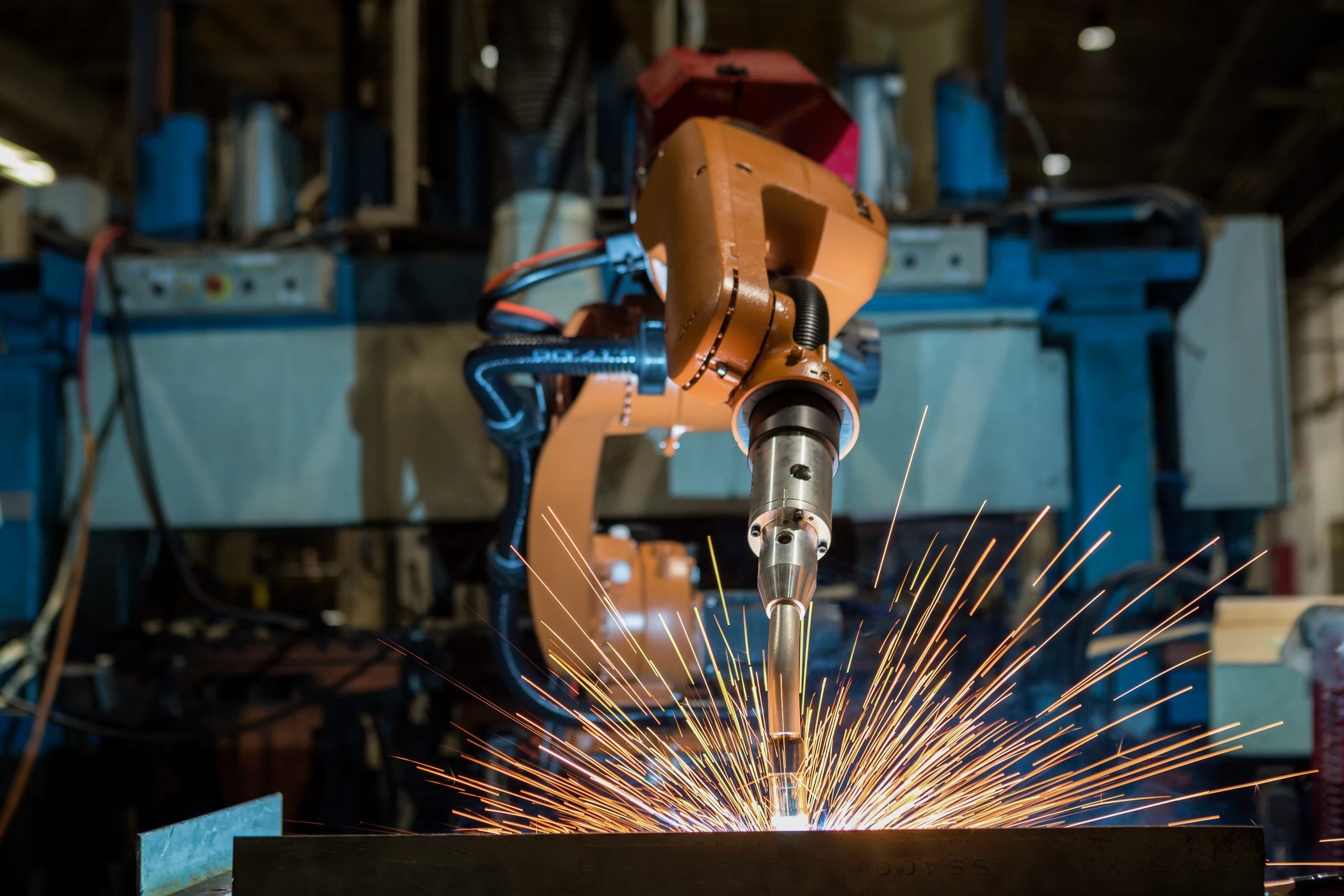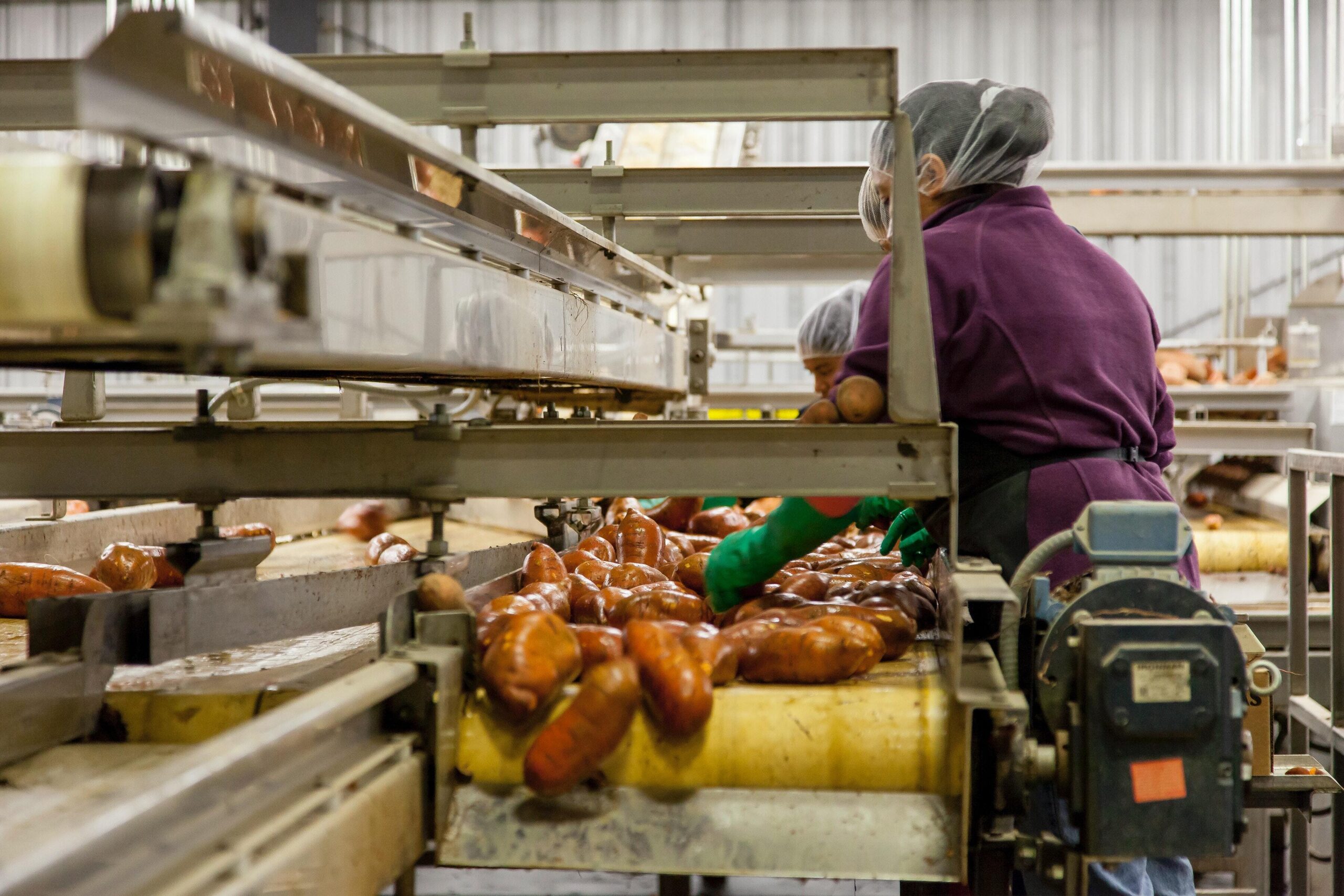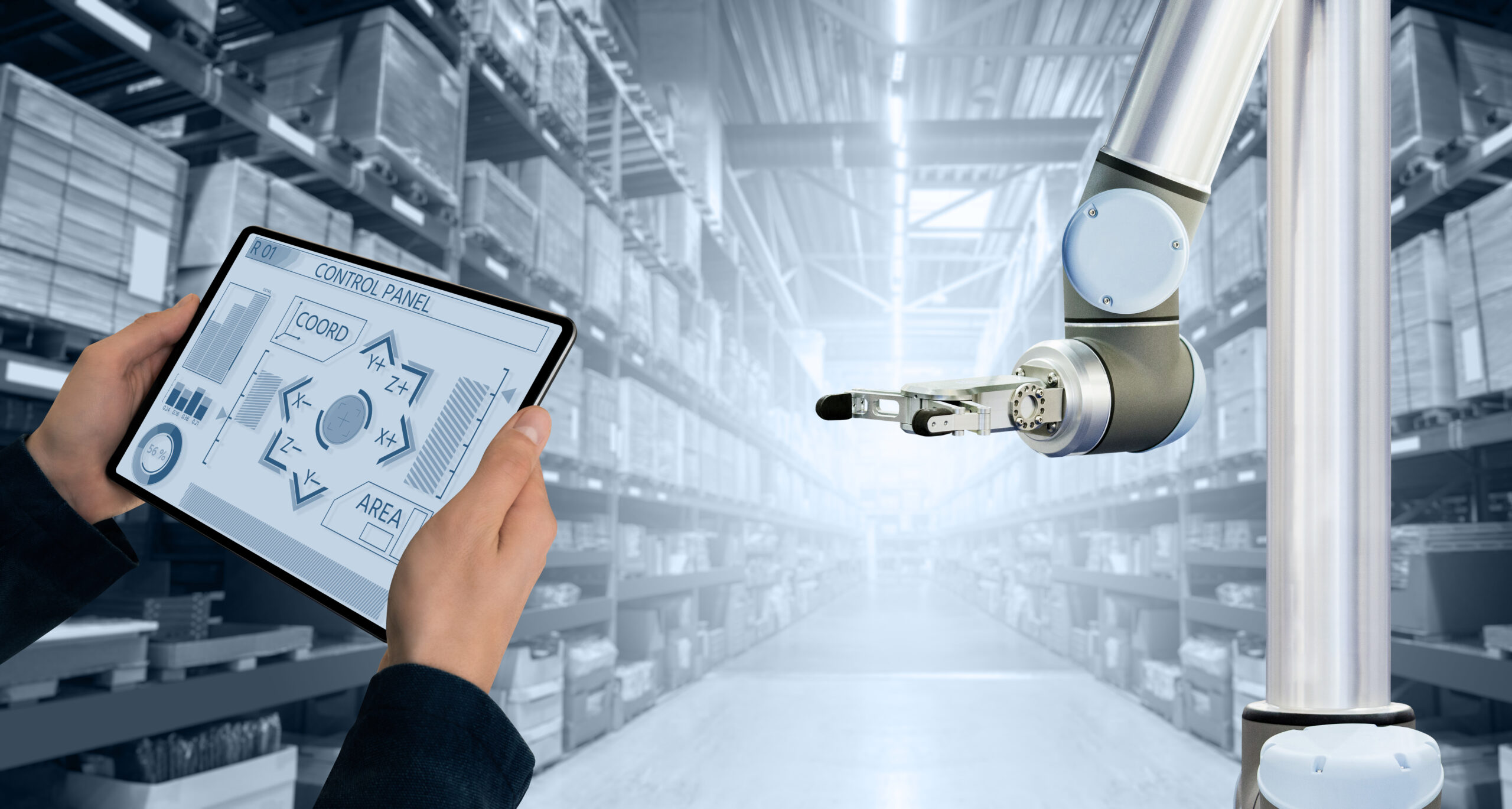
CobotX Blog
March 9, 2022
Back
Industry 4.0: Meaning, benefits and technologies

The world is constantly changing and evolving, especially in the domain of technology. In the last several decades, the planet has witnessed some of the fastest and most amazing discoveries ever, and this trend will not slow down. What's more, we can expect new technologies to emerge faster than ever before. This is one of the reasons we can talk about Industry 4.0 today and its benefits that help us lead a better and more organized life. But what is precisely industry 4.0, why is it called that way, and what happened to industries 2.0 and 3.0?
What is Industry 4.0?
Industry 4.0, otherwise known as the Fourth Industrial Revolution, is the new phase of the industrial revolution that heavily relies on interconnectivity, automation, machine learning and real-time data. It comprises of the Internet of Things (IoT), smart manufacturing and intelligent digital technology (such as machine learning and big data) to create a better and more efficient ecosystem for companies that want to modernize manufacturing and their supply chain management. This means that industry 4.0 is indeed investing in new technologies that will prove to be quite beneficial for your company's future.
Apart from that, it is also crucial to understand that industry 4.0 is also about revolutionizing business operations and the way companies work and grow. Markus Lorenz gave a good example on what industry 4.0 is all about in his TED Talk video " Industry 4.0: How intelligent machines will transform everything we know ". He gave a real-life example of a harbor crane and how its software cannot only help move the containers from place A to place B, but also calculate their weight and place them accordingly so that the weight of the whole ship is balanced.
What happened to 2.0 and 3.0?
The story of the First Industrial Revolution that happened between the late 1700s and early 1800s is a well-known one. However, not many are familiar with the Second Industrial Revolution that started in the early 20th century with the introduction of steel and electricity in factories. This enabled manufacturers worldwide to increase their efficiency and make their machinery more mobile than ever before. Mass production concepts were introduced, which boosted productivity.
The Third Industrial Revolution, also known as Industry 3.0, started in the late 1950s and was dominant until a few decades ago. Manufacturers began using more electronic technologies, which was eventually replaced by early-model computers. Industry 3.0 puts more emphasis on digital technology and automation software.What are the benefits of 4.0?
The technologies of Industry 4.0 offer more than ever before. The main benefits of Industry 4.0 are the following:Improved productivity and efficiency
Industry 4.0 enables us to be more effective and efficient as we achieve more by using less. This means that factories can produce more in less time by allocating resources more efficiently and cost-effectively. This can result in less downtime due to enhanced machine monitoring and semi-automated (and fully automated) decision-making. Industry 4.0 brings enhanced machine monitoring, automated reporting and automated track and trace processes. This all leads to less downtime, and more accurate production numbers, and therefore improve efficiency and productivity.
Digital Office
Due to Industry 4.0, product lines, business processes and departments can easily communicate with each other, regardless of location, time zone, or any other platform.Flexibility and agility
Improved flexibility and agility are also among the benefits of the Fourth Industrial Revolution. This means it's easier to introduce new products to the production line and create new opportunities for high-mix manufacturing or one-off manufacturing runs.Better customer experience
It's industry 4.0 that enabled for improvements in customer experience. Automated track and trace capabilities have made it easier for businesses to understand how they can improve the service they offer and the quality of their goods and eliminate any product issues they might be having.Reduced costs and higher revenues
Due to the technological and digital requirements, investments for applying the potential of industry 4.0 can be high. However, every year there are new low-cost investments with a fast ROI on the market. One of the most prominent characteristics of this industry is how it turns complex technology into user-friendly and cost-friendly tools. This means that industry 4.0 can help all business and factories reduce costs in the long run. Better use of resources, less machine and production line downtime, better product quality, less resource and material and faster manufacturing are some of the ways that industry 4.0 can increase revenue and profitability and lead to improved ROI opportunities.
Due to Industry 4.0, product lines, business processes and departments can easily communicate with each other, regardless of location, time zone, or any other platform.
What are the leading technology advances of industry 4.0?
The technologies that industry 4.0 spawned can be found in every household, but they are also creating incredible benefits for the manufacturing industry. The nine leading technology advances are:Big data and analytics
These two terms refer to the complex process of acquiring information that was impossible to be achieved before. These include market trends, unknown correlations and customer preferences, among others. Different analytics can be gathered, allowing businesses and companies to make smarter decisions about their future and the direction they want to go.Internet of Things
The term Internet of Things (IoT) is used to describe the process of using the internet and wireless connections to connect different (or all) parts of a business, factory or industrial plant. That being said, it is a concept referring to connections between physical objects such as machines and the internet. This can be used in order to enhance machine communication and machine learning, and sensor data.
Let's take the example of Bluetooth Low Energy Sensors to paint a picture of how the IoT can enhance machine communication. These sensors do not require cables to work, as they run on a single battery that can last up to three years. During their lifetime, the sensors send their information via a gateway to the cloud. As a result, they complete the whole installation process faster, cheaper and more effective.Autonomous robots and cobots
Although robots (in different forms) have existed for quite some time now, during industry 4.0, we saw the arrival of autonomous robots and cobots. The new generation of robots will make the interaction between humans and people more manageable, and it will automate the manufacturing process more than ever before and work more intelligently.simulation
We are all familiar with 3D simulations, as engineers have been using them for some time. But now, the simulations will also be available in plant operations, allowing people to have a digital copy of the real thing they want to test. The manipulation is completely done digitally.augmented reality
Although it seemed like a technology only seen in science fiction movies some years ago, augmented reality is used more and more in businesses and factories. This technology saves a lot of time as it can help any individual (for example, wearing augmented reality glasses that are connected to a central computer) fix any issues regardless of where they are at the moment.Cyber ??security
Cyber ??security is one of the most important technologies of industry 4.0. With the arrival of the revolution and all the new technologies it introduced, hacking became more common. For businesses and companies to prevent themselves from that, they need to include high levels of cyber-security. These include two-factor authentication, extra logins and new passwords.The Cloud
The Cloud is the space that allows both companies and individuals to store and share multitudes of data and information. Cloud-sharing is yet another benefit of this technology as it helps in sharing information and data faster than ever before.additive manufacturing
An example of this can be seen in 3D printing, as companies and factories can easily produce an item themselves that would otherwise have to be outsourced, or would not have been possible to make. 3D printing results in faster production and lower-cost for unique items. It also provides the possibility of a company to design shapes that cannot be made with traditional production techniques. Apart from the cost-effective benefits, this can also help in reducing product shortages.reshoring
International supply chains are becoming more and more vulnerable, especially after the start of the pandemic . Reshoring is a growing trend as companies are finding out that the advantages of offshore manufacturing are no longer that compelling. However, another benefit of industry 4.0 is that it makes advanced production technology available at low prices. In result, 4.0 makes it possible to reshore the production close to the end market. This means that the workload that used to be costly can be done competitively in Europe, and it can be fully automated.conclusion
While we are still trying to figure out what Industry 5.0 will bring and how it will connect humans and robots, Industry 4.0 is evolving, and we do not have a clear picture how it will look like in a couple of decades. This is the time for all companies to realize the importance of the innovations this Industrial Revolution brings and all the possibilities it presents us with. Upskilling work performance, recruiting employees with the right set of skills, time and money-saving solutions are just some of the benefits of this revolution, and we are all looking forward to seeing what's next in store.
But until that happens, it's important for us to embrace what Industry 4.0 is offering. We suggest you book a call with the Cobotx team and hear how you can implement the new trends in your business and what benefits you have from them, including a faster ROI.
Lastest Posts






